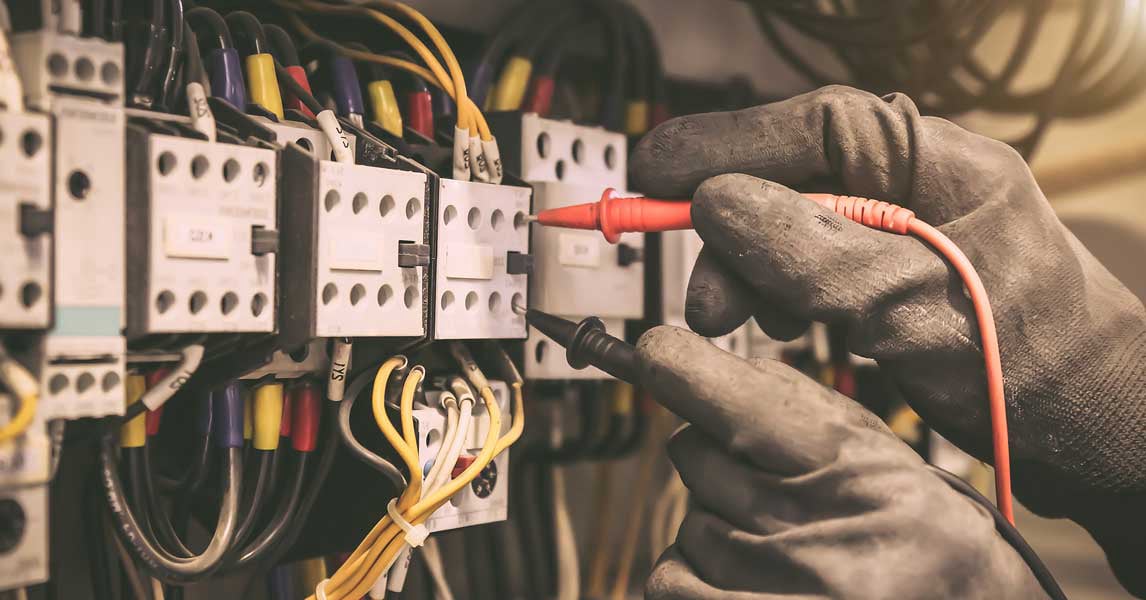Professional Insight:
Whether you're upgrading your home's energy system or installing your first EV charger, make sure your circuit breaker panel is ready to handle the load. Consult a licensed electrician to evaluate and upgrade your panel for maximum safety and performance — especially if your home has old wiring or requires electrical safety inspections as part of a broader upgrade.
Understanding Circuit Breaker Panels
Circuit breaker panels, also known as breaker boxes or distribution boards, are the central hubs of electrical systems in homes and commercial buildings. They house multiple Circuit breakers that control and protect individual circuits. When electrical faults, overloads, or short circuits occur, these breakers trip to prevent fires, damage, and injury.
In a traditional setting, circuit breaker panels manage the electrical flow from the utility grid to various devices and appliances. However, with the introduction of solar installations and EV chargers, these panels now need to accommodate more complex and dynamic energy inputs and outputs — a growing concern in both residential and commercial wiring environments.
The Intersection of Solar Power and Circuit Breaker Panels
1. Managing Solar Energy Input
When solar panels generate electricity, it needs to be distributed safely throughout the property. This is where circuit breaker panels come in. They serve as the gateway through which solar-generated electricity is routed into the home’s electrical system or back to the grid.
In many solar setups, the inverter — which converts DC from the solar panels into AC — connects directly to a dedicated breaker within the panel. This breaker not only allows for manual disconnection in emergencies or maintenance situations but also provides automatic protection against faults.
2. Load Balancing and Backfeeding
One of the most critical functions of circuit breaker panels in solar installations is load balancing. The panel ensures that the energy generated does not exceed the home’s or system’s capacity. Backfeeding, or the process of sending unused energy back to the grid, must also be handled carefully. Improper backfeeding can cause surges or interfere with utility systems, which is why breaker panels must meet specific codes and regulations, such as those outlined by the National Electrical Code (NEC).
3. Future-Proofing with Solar-Ready Panels
Modern homes are increasingly opting for solar-ready breaker panels. These panels are pre-configured with extra space, higher capacity, and appropriate breaker slots for future solar integration. This foresight simplifies upgrades and reduces installation costs when homeowners decide to adopt solar power. If your system also includes lighting installation or updated receptacle installation, having room to grow within your panel becomes even more important.
Circuit Breaker Panels in EV Charger Installations
1. EV Charger Load Demands
Unlike many traditional appliances, EV chargers draw significant amounts of power, especially Level 2 chargers that operate on 240 volts. This high current demand means your existing circuit breaker panel may need an upgrade to safely accommodate the new load.
For example, a typical Level 2 EV charger can require a dedicated 40- to 60-amp breaker. If the panel lacks available space or sufficient capacity, an electrician may need to replace it or add a subpanel to support the EV charger — particularly if other recent upgrades like light switch additions or receptacle installations have filled up the panel.
2. Dedicated Breakers for Safety
Installing an EV charger necessitates its own dedicated circuit and breaker. This isolation ensures that the charger doesn’t share a circuit with other appliances, minimizing the risk of overloads and tripping. The circuit breaker panel thus becomes the main control point for protecting both the EV charger and the overall system.
3. Smart Panels for Smart Charging
Advanced circuit breaker panels, often called smart panels, can be paired with smart EV chargers. These systems allow for real-time energy monitoring, load management, and even remote control via mobile apps. Smart panels are particularly beneficial in homes with solar power, as they can optimize when and how energy is drawn from the grid versus solar generation — while also supporting other smart upgrades like automated lighting installations and smart light switches.
Safety Regulations and Code Compliance
The integration of solar systems and EV chargers into residential and commercial properties is governed by stringent codes. Circuit breaker panels must comply with national and local electrical codes to ensure safe operation. These codes dictate the panel’s capacity, breaker sizing, and wiring requirements.
Upgrading your panel not only helps accommodate new technology but also ensures your system remains within code — a crucial consideration for electrical safety inspections, insurance, and property resale.
Signs You May Need a Panel Upgrade
If you’re considering installing solar panels or an EV charger, it’s wise to assess whether your existing breaker panel can handle the increased load. Here are some indicators that an upgrade may be necessary:
The panel is over 20–30 years old or still connected to outdated wiring, in which case an old wiring replacement might be essential.
You frequently experience tripped breakers or flickering lights.
The panel is at full capacity with no open breaker slots.
Your home still uses a fuse box instead of a modern circuit breaker panel.
You plan to add multiple high-demand devices, including new lighting installations, additional receptacles, or EV chargers.
The Backbone of Modern Energy Systems
In the growing ecosystem of renewable energy and electric transportation, circuit breaker panels serve as the foundational infrastructure. They protect your home, equipment, and loved ones by regulating power flow and preventing dangerous faults. More importantly, they make it possible to integrate cutting-edge technologies like solar power, EV chargers, and even smart light switches into your daily life without compromising safety or performance.
n’t just a technical requirement — it’s a critical step toward a safer, more energy-efficient future.
Whether you're a homeowner ready to embrace green energy or a business installing multiple EV chargers and upgrading your commercial wiring, never underestimate the role of your circuit breaker panel. It’s not just a box in the corner of your garage — it's the heart of your smart, sustainable energy system.
